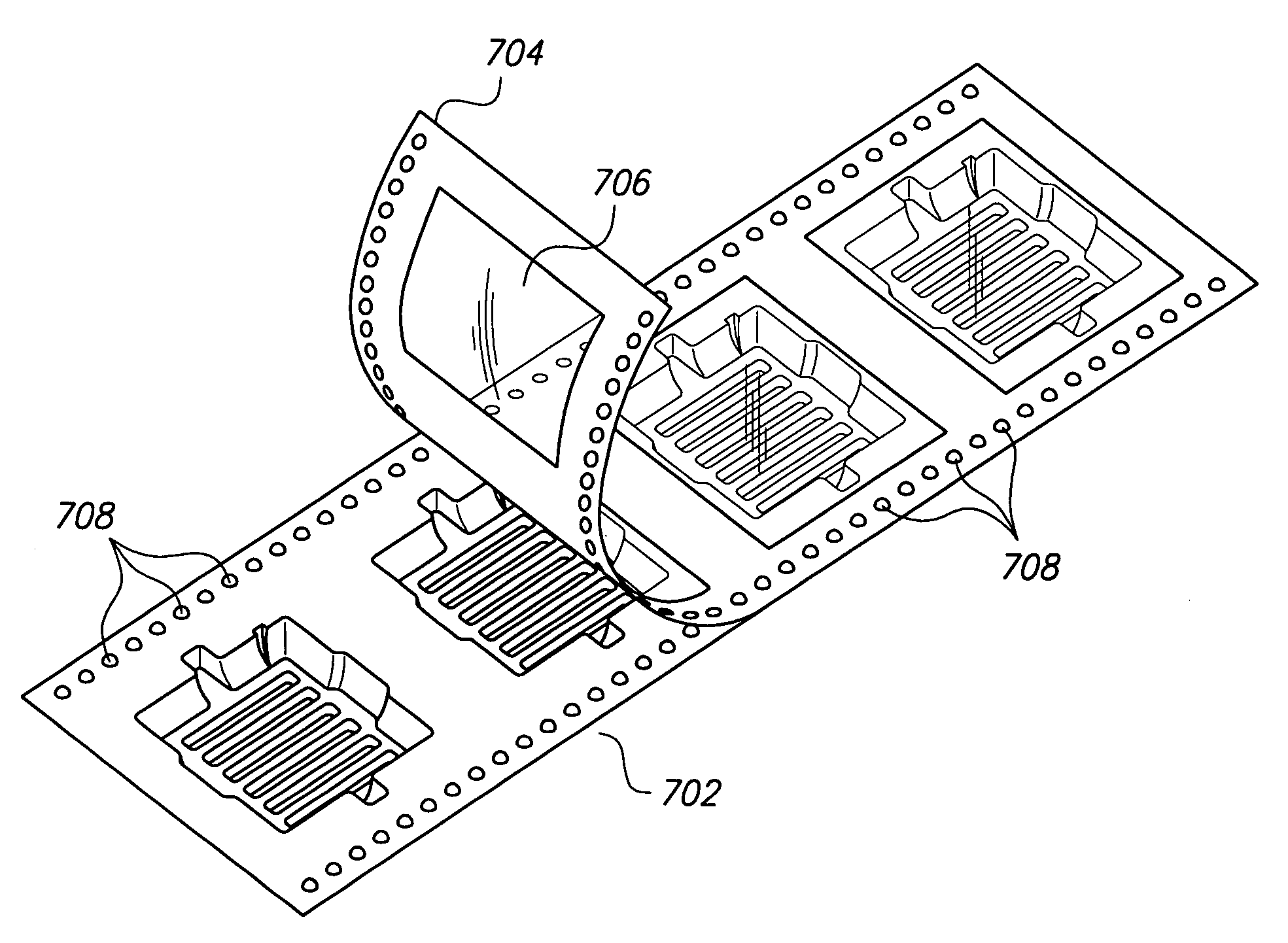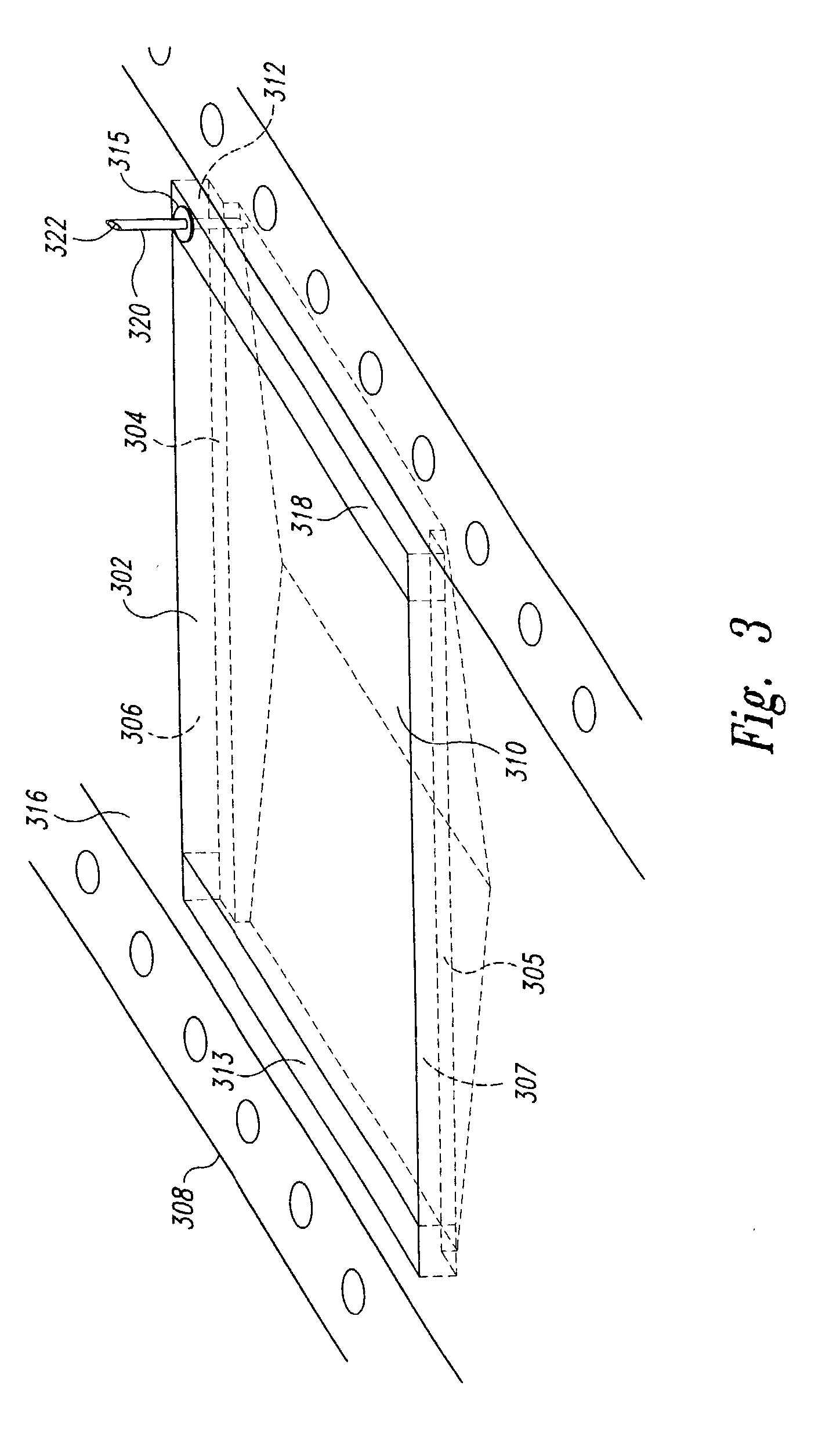Automation-optimized microarray package
a microarray and automatic optimization technology, applied in the field of microarrays, can solve the problems of plastic packaging generally insufficient mechanically stable to allow, reactive surface production, glass-to-plastic bond failure,
- Summary
- Abstract
- Description
- Claims
- Application Information
AI Technical Summary
Benefits of technology
Problems solved by technology
Method used
Image
Examples
Embodiment Construction
[0024]One embodiment of the present invention is a linear sequence of regularly-spaced, tightly sealed microreaction chambers that each contains a precisely positioned and oriented microarray, called a “microarray strip.” The microarray strip further includes tractor feed perforations or other regularly spaced mechanical or optical features that allow the microarray strip, and the microarray contained within the microarray strip, to be mechanically translated and precisely positioned within various automated electromechanical systems. A microarray strip may also serve as a sequence of economical and reliable storage chambers and as packaging for storing, handling, and transporting microarrays contained within the microarray strip. The microarray strip may be rolled onto reels for compact and reliable storage of microarrays.
[0025]Note that a microarray strip may have a length to width ratio of at least 5 / 1, 10 / 1, 50 / 1, 200 / 1, 500 / 1, or even at least 1000 / 1. Microarray strips may have...
PUM
| Property | Measurement | Unit |
|---|---|---|
| Flexibility | aaaaa | aaaaa |
| Mechanical force | aaaaa | aaaaa |
Abstract
Description
Claims
Application Information
 Login to View More
Login to View More - R&D
- Intellectual Property
- Life Sciences
- Materials
- Tech Scout
- Unparalleled Data Quality
- Higher Quality Content
- 60% Fewer Hallucinations
Browse by: Latest US Patents, China's latest patents, Technical Efficacy Thesaurus, Application Domain, Technology Topic, Popular Technical Reports.
© 2025 PatSnap. All rights reserved.Legal|Privacy policy|Modern Slavery Act Transparency Statement|Sitemap|About US| Contact US: help@patsnap.com



